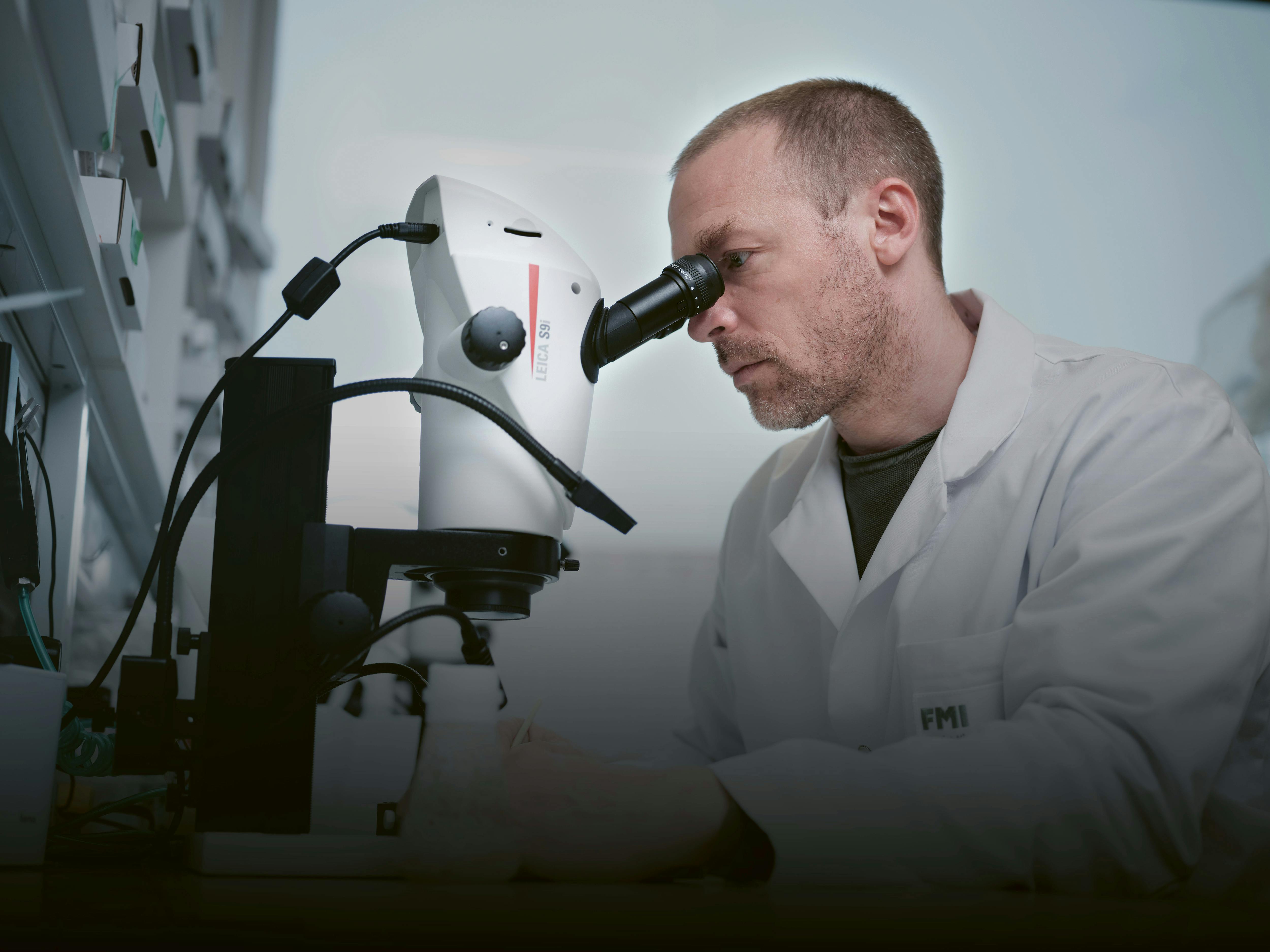This is also the case with cryo-EM for which Novartis is partnering with the FMI, which also has close ties to academic research. Moreover, the technology is opening up new possibilities for protein and drug research that is out of reach for traditional imaging technologies. “Cryo-EM is a rising star among structural biology methods because it’s opening doors for so many larger drug targets and protein complexes that cannot be crystallized and so have been out of reach until now,” says Wiesmann.
Because cryo-EM uses a beam of electrons to produce images of biological molecules frozen in a thin layer of ice, it effectively has no upper size limit. The technology has been slowly developing but witnessed a revolution in 2013, when improvements in hardware allowed the resolution achieved by cryo-EM to rival the one obtained with crystallography. Since then, the number of structures produced by cryo-EM has doubled every two years. In 2020, not even 10 years after the resolution revolution, more than 20 percent of new protein structures were determined by cryo-EMs.
“There are projections that within four years cryo-EM will become the most dominant structural biology method out there,” says Wiesmann. “It is amazing how rapidly this method has changed structural biology and how profoundly it is impacting our drug discovery efforts already.”
Beyond larger proteins, another field-changing advantage of cryo-EM is that researchers can now look at ensembles of proteins together – which was nearly impossible in the past. Proteins frequently act in coordination with other proteins, and cryo-EM is giving some of the first snapshots of how these proteins interact with each other.
The team has already captured structures of previously inaccessible drug targets for cancer and immune diseases. One of their targets, the proteasome, is an assembly of proteins that rids the cell of other unwanted proteins. The proteasome is also a potential drug target for several parasitic diseases like leishmaniosis, a disfiguring and potentially fatal disease that causes up to 30 000 deaths each year. Cryo-EM has already helped the team identify and visualize a new molecule that kills the parasite by binding to the proteasome.
But Wiesmann, Jacob and their colleagues are not stopping here and are on the lookout for new frontiers. Alongside the most recent advances, there is one more method that Wiesmann and Jacob are looking forward to – methods that allow them to see proteins in action. “In drug discovery, all of these techniques come together and provide complementary information,” says Jacob. “Another real breakthrough for us will be methods that can actually see what’s happening to a protein in the cell – and we might see these tools in the near future too.”
Given the determination of Novartis to continue to boost innovation, new findings may soon pop up as researchers get a clearer image of nature’s tiniest structures.


 Table of contents
Table of contents A long path
A long path The rise of structural biology
The rise of structural biology Innovation-minded and partnerships
Innovation-minded and partnerships New frontiers
New frontiers














